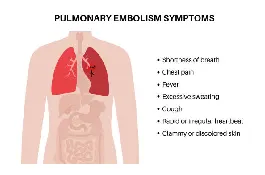Home » Pulmonary Embolism

Pulmonary embolism (PE) is a serious and potentially life-threatening medical condition that occurs when a blood clot, usually from the deep veins of the legs or pelvis (deep vein thrombosis or DVT), travels to the lungs and blocks one or more pulmonary arteries. This blockage can prevent blood flow to the lungs, leading to various complications.
Deep Vein Thrombosis (DVT): The majority of pulmonary embolisms are caused by blood clots that originate in the deep veins of the legs or pelvis.
Risk Factors:
Diagnostic Tests:
Treatment:

B-38/56, Lane-4, Sheel Nagar Colony, Mahmoorganj, Varanasi, 221010
+91 73072 72241
+9173380 74953
Info@drvikasjaiswalchestclinic.com
Click here to book an
appointment at Medicare.
Sign up for the lungplusclinic newsletter to receive all the news and updates.
Copyright by Lung Plus Clinic. 2019 - 23. All rights reserved.
Developed & Marketed by 7star Medtech Pvt. Ltd.